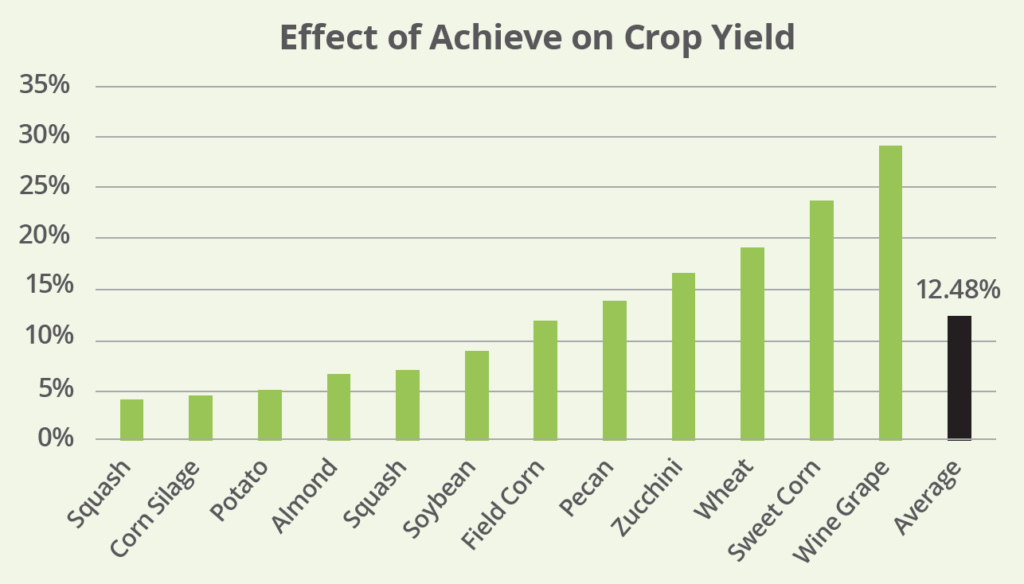Accounting for nearly a third of all organic food sales and 15 per cent of the total US fruit and vegetable market, organic fruit and vegetables are the undisputed star of the U.S. organic sector, according to the Organic Trade Association’s latest Organic Industry Survey.
But as the number of farms fully converted or in transition increases to meet this demand, growers in turn are demanding new input products that meet the strict production protocols, says California-based crop nutrition specialist OMEX® Agrifluids USA.
“Consumers and growers alike know that the term ‘organic’ is federally regulated and governed,” says Mike Williams, the company’s CEO. “The label reassures everyone that organic products are being produced under the strict system we would expect.
“Clearly there’s no place for conventional crop inputs in organic production, but the ‘organic’ descriptor isn’t regulated for all market sectors in the same way as it is for food.”
Fertilizers are a prime example of a category where the ‘organic’ term is not federally controlled. “Almost any fertilizer can carry the term ‘organic’ on its label,” points out Mr. Williams, “but that won’t always permit its use in certified organic farming systems.”
In fact, the only fertilizers – and crop inputs of any description – approved in organic farming systems are those certified by OMRI, the independent non-profit accredited by USDA as an input verifier.
“According to OMRI, up to 15 percent of the applications received for OMRI listing do not make it through the process,” Mr. Williams notes, “evidencing the strict analysis and review that each product undergoes.”
It’s for this reason that OMEX® is particularly pleased that Achieve 3-1-3 – a fertilizer – achieved OMRI certification just last year. Formulated to deliver NPK in a 3:1:3 ratio, the biofertilizer comprises a blend of amino acids, plant growth enhancers and systemic immune response compounds.
“Achieve™ is derived from the guayule plant, a desert plant native to the south-western US,” explains OMEX® agronomist Francisco Rivera. “What’s remarkable about it is its ability to help plants fight stress, particularly that caused by external factors such as extremes of temperature, flooding or drought.
“Known as abiotic stress, it’s of increasing concern to the agronomic world because of the more erratic climate events we’re starting to see,” says Rivera.
Both foliar and root-acting, Achieve’s™ amino acids act directly on stress by accelerating activity both in the plant’s own internal metabolism, as well as the all-important soil microbes that optimize the rhizosphere — the plant’s root zone.
“This serves to improve overall plant health, even in the absence of stress factors,” notes Rivera, “while strengthening crop vitality. Typically, this manifests itself in better early season crop growth, leading to stronger flowering, more complete pollination, better fruit set and, depending on the crop, enhanced fruit formation or improved quality in the harvestable portion of the crop.”
Achieve’s™ plant growth enhancers, meanwhile, act in a signaling role to further maximize crop potential during early season and reproductive stages. “Cleverly, these enhancers affect movement of the plant hormones auxin and cytokinin,” explains Rivera. “Auxin is diverted to the uppermost parts of the plant, leaving cytokinin uninhibited to trigger further cell division.”
Rivera says Achieve™ has delivered yield increases of up to 29 percent in company trials across a range of crops, including potatoes, wheat, field and sweet corn, almonds, zucchini, wine grapes and even cotton. The average yield increase observed is over 12 percent.

“Appropriate rates really do depend on crop and growth stage,” advises Rivera, “but generally growers have found the best results come from a foliar or irrigation treatment near bloom, at full bloom, and after bloom.
“For example, strawberries treated with 4oz/acre of Achieve 3-1-3 will see improved flowering and fruit set. For both vegetable and fruit crops, this gives best ‘bang for the buck’.”
Rivera suggests that for best results from Achieve 3-1-3, growers consult their agronomists to work out optimum rates and timings. “In trials, we found that there was no gain from taking applications above 1 pt/acre in a season.”
Achieve’s™ OMRI registration number is OMX-13489.
Learn more at www.OMEXusa.com.
The product names and brands referenced here are registered and trademarks of OMEX® Agrifluids, Inc.
© OMEX® Agrifluids, Inc. 2021.

